Fundamental Facts About Robots
WHAT IS A ROBOT?
Robots have been defined as machines that can carry out certain activities or actions without direct contact with them.
However, this definition has been referred to as an old definition of robots because the definition actually made drones and other remotely controlled devices be referred to as robots.
Many books consulted before writing this post, defined the robots as programmable machines that can carry out complex actions without any external control.
This last definition can be attributed to the modern robots as compared to the earlier definition which included drones and early robots.
Details obtained from the history of robots show that robots were initially referred to as any mechanized device that can make moves or perform a certain action when activated from a distance with rope or any linking mechanism and such is the belief of early centuries of human history.
Hence, the two distinctive classifications of definitions drawled a clear difference between what modern days scientists referred to as remote control machines which may have wire connections or maybe wireless like hydraulic man lifts used in the construction industries, drones, etc. to the modern days’ programmable machines known as robots.
HISTORY OF ROBOTS
The history of the robot is very complex when based on the early century’s definition of robots which tends to include drones, man lifts, and other remotely controlled devices as robots.
When drafting the history from that perspective, the history of robots can be dated back as earlier as the B.C.s when Cadmus sowed dragon teeth that turned into soldiers, Pygmalion whose statue of Galatea came to life and so many others of such which existed during the era.
But the sources for the automatic actions of those devices and statues were not known to others except their makers for that reason, some of them were seen as magically controlled devices since there was no availability of automatic mechanical power or electrical power at that time.
During those eras, Hephaestus of Greek created utilitarian three-legged tables that could move about under their own power, in the 11th/12th centuries; Ajatashatru the king of Magadha gathered the Budha’s relics and hid them in an underground protected by mechanical robots known as “bhuta vahana yanta” brought from the kingdom of Roma visaya until they were destroyed by king Ashoka.
The early Christian legends were said to have invented a device with brazen heads that could answer questions posed to them.
And Albertus Magnus was said to have invented an entire android that could perform some domestic tasks, a work destroyed later by one of his students for a disturbance. All these early robots did not reveal the mechanisms behind their operations.
The first early robot whose working mechanism was made known is the “THE PIGEON” a postulated mechanical bird by a Greek Mathematician Archytas of Tarentum in the 4th century B.C. meant to use steams for its powering.
In 250BC Ctesibius of Alexandra made another automation device known as “CLEPSYDRA”. In 322 BC Aristotle speculated in his book “POLITICS” that slavery could be abolished one day due to the presence of automated devices that could carry out activities like humans.
In 1023-957 BC ancient China made mechanical devices that could ring gongs or bells. In 1136-to 1206, Al-Jazari, a museum inventor made many automated machines including kitchen appliances that were powered by water.
Leonard Da Vinci around 1495 made the first humanoid robot in his book discovered in 1950 the robot bears the look of a knight and was able to sit down, wave arms, and move jaws and head.
In 1796 Hisashige Tanaka, a Japanese craftsman created another humanoid toy some of which could serve tea, and fire arrows drawn from a quiver. The above humanoid robots were operated through link mechanisms that can be controlled from a distance.
However, the next generation of ancient robots started through the creation of remotely controlled systems like drones, and remote-controlled robots powered by either mechanical energy or electrical energy.
The few histories about them can be traced to the 1870s when “Torpedoes” were made by John Ericsson whose model uses a pneumatic system, John Loius Lay’s model uses electric guided wire the same as the Von Scheliha’s model, and the Torpedoes were the first concept of drone aircraft.
All the early models of the Torpedoes were made with wire-controlled systems until Nikola Tesla demonstrated the first “wireless radio-controlled Torpedo in 1898.
However, Archibald Low has been known as the father of radio-controlled systems for his works on guided rockets and planes during the First World War in 1917 he demonstrated to the Royal Flying Corps his remote-controlled aircraft.
History of the Modern-day Humanoid Robots
In Germany, Friedrich Kaufmann made his first humanoid robot in 1910 which was a soldier with a trumpet and was displayed until 30th April 1950.
In 1928 W.H. Richards demonstrated his first humanoid robot at the annual exhibition of the Model Engineers Society in London, the robot was named Eric and was made with an aluminum suit of armor with eleven electromagnets and one motor powered by a 12-volt power source, and it operated with voice control or remote control.
In 1948 William Grey Walter of the Burden Neurological Institute at Bristol in England created the first electronic and autonomous robots with complex behaviors, his first robot was named ELMER.
After this last creation of autonomous robots, modern-day’s autonomous robots began to spring up with different improvements and functionalities.
HOW MODERN ROBOTS WORK (MODERN ROBOT’S WORKING PRINCIPLE)
The working principle of robots is based on the full content of the automation engineering course known as robotics.
Robotics is a course that comprises courses from other disciplines of engineering and science that include mechanical engineering, electrical engineering, computer engineering, mechatronics engineering, and other engineering and science fields.
It is the core principle behind modern robots covering the designing, construction, operations, uses of the robots, and their computer programming aspects including the creation of the artificial intelligence programs installed into the robots.
The basic idea of the modern robots’ working principle is based on the commands written in programmable languages which are interpretable by computers and can be used by the computer to activate a particular unit of any machine engine attached to it.
Such that once the program is activated on the computer all the commands represented in the program will be carried out thereby triggering and controlling motors or engines of any machine attached to it.
Modern autonomous robots have an in-built computer with the required program or programs installed into it, such that when the robot is activated it will start carrying out all the programmed commands written into the memory or the microcomputer in it.
The above principle has nothing to do with the size, shape, duty, or intended uses of the robot, etc. they all use the same principle so a fully built modern robot without any written computer program in it will become a dummy and unable to carry out any activity except it is operated with remote control or voice commands.
TYPES OF ROBOTS
Robots had been classified generally into the following according to their designs and functions:
ANTHROPOMORPHIC ROBOTS:
These robots’ classification includes the Humanoid robots, the Android robots, and the Cyborg robots.
Humanoid robots are robots that have a similar appearance and look like humans while android robots are humanoid robots or synthetic organisms designed to look and act like humans especially one with a body having a flesh-like resemblance.
Cyborg robots are being with both organic and biomechatronic body parts. The term was coined in 1960.

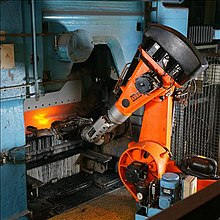
ARTICULATED ROBOTS:
These are robots with rotary joints having the ability to swing their arms, they are usually powered by electric motors and their arms may range from one, two, and even ten or more interacting arms.

DOMESTIC ROBOTS:
These are home service robots, autonomous in operations and used for household chores. Modern robots have a good number of different domestic robots that can perform various household chores such as washing plates, mobbing rugs, laundry services, etc.
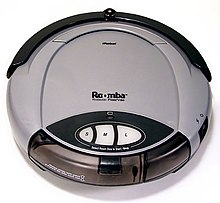
ENTERTAINMENT ROBOTS:
Just as the name implies these categories of robots had been made to work with entertainment industries, amusement robots and home entertaining robots also belong to this category.
MILITARY ROBOTS:
Known as assaultive robots, mission rescue robots, and other types of robots used by the military. Modern military robots can carry out attacks and embark on rescue missions also. Snake robots made by the Israeli military had been used for monitoring and spying works which have made the military robots have even more applications.
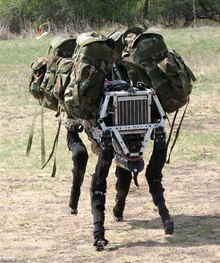
MEDICAL ROBOTS:
Medical robots are used in the field of medical science for research, discoveries, and development. A good example of such is the robots used for surgery purposes and others of their kind.
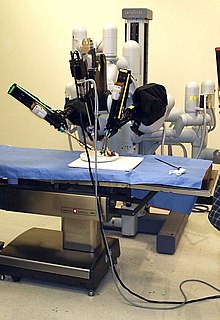
Office receptionist robots, robots working in banks, supermarkets, and robots used for public advertisements, etc. had been classified as service robots. Other robots found in other areas of application to human services can also be classified under this category.
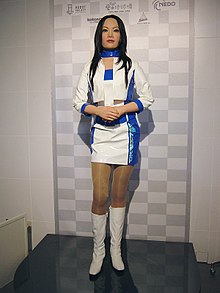
Classification of Robots According to Working Environment
In a broader classification, robots had also been distinguished based on their operating environment as listed below:
- AERIAL VEHICLE: under this category, drones are referred to as robots and that includes any remotely controlled or self-controlled flying vehicles.
- GROUND VEHICLE: all the modern vehicles meant for driverless or remote-controlled driving are included in this category.
- MOBILE ROBOTS: small mobile robots in the form of toys for spying purposes, ground moving animal robots, etc. are included in this category.
- MICROBOTICS: these are miniature robots in the form of insects having a dimension that is less than 1mm. they are used for biological purposes and can handle micrometer size components.
- NANOROBOTICS: nanorobots are the less sized version of the microbotics, they are scaled down to microscopic size in order to put them into very small spaces to perform a function, besides science fiction, real nanorobots are still in development.
- ROBOTIC SPACECRAFT: All the various types of unscrewed spacecraft had been classified into this category. Robotic spacecraft are usually meant for scientific research measurements and often called the space probe and they use telerobotic control.
- UNDERWATER ROBOTS: the new fish robot is made for monitoring hidden aquatic animals beneath the water surface and every other type of robot meant to be used in the water had been classified under this category.
USES OF ROBOTS
The uses of robots may currently be limited, but it is believed that the future robots can have countless uses which may make them have up to 60% or more of the functions that humans can do.
The modern robots were made to perform a particular job or a few sets of jobs based on the programs written in them.
- Industries have been found to be the major users of modern robots because of their perfect operations in manufacturing and assembling lines. The use of robots in the industries includes; Product packaging, bottling jobs, product stamping jobs, tightening and loosening of nuts, conveying of loads, etc. these functions are not performed by one robot but rather by sets of robots and each robot has its own function performed differently.
- Hospitals are another field that makes use of robots for surgery, monitoring, and other important purposes. Nanorobots are believed to become a vital robot for the hospitals when their development is completed they may be inserted into bloodstreams to monitor and obtain needed data from patients.
- Movie production firms are other users of modern robots, they are employed in the making of modern hi-tech movies to perform operations or actions which may be difficult for human actors or actresses to do especially in action movies.
- Commercial firms like the banks, supermarkets, and other related institutes had been seen employing robots as staff. ATMs in the banks are classified as service robots, robot clerks, and sales reps. in supermarkets also belongs to the category of service robots. Amazon’s online market had been discovered to have over 1000 robots in service at their warehouse in the U.S. which is a good example of the uses of modern robots in the commercial sectors.
- Robot in the form of the road traffic control system is being used by Road safety personnel to reduce the rates of accidents at road junctions.
- Future robots in development had been predicted to have teaching abilities that can make them employable as school teachers.
- The military had been the fore users of drones and robots for varieties of purposes ranging from military strikes to surveillance, video recording, and spying works.
MODERN ROBOTS AND THEIR DESIGNS
The factors which had been in place in the designing of the modern robots include:
WEIGHT CONTROL: modern robots that are heavy are industrial robots that can be operated from one place once mounted in the appropriate position. Other robots such as the humanoid robots and Nanorobots are light in weight making their mobility and moving of parts possible.
The weight control also helped the robots to be operated with rechargeable batteries and can operate for a long time. The electric motors and sensors were made to be small because of the lightweight of the robots.
MOBILITY AND FLEXIBILITY: the mobility and flexibility of parts had been a major problem in robot designs if the robot is poorly designed without real consideration of its mobility and flexibility of it such robot may end up not performing the intended function.
Early robots had issues with mobility such that it was difficult to make robots that can walk in a locomotive way like humans rather they were fixed with electric motors on their toes to roll to their destination instead of walking.
All the modern robots with arms and multiple joints have their actions made possible due to the flexibility tolerances provided during their production and such was incorporated with accuracy and rigidity.
ACCURATE PROGRAMMING: the programming of robots to carry out the needed functions had never been an easy job.
The various programmable languages that exist for the writing of computer command programs did not make the job easier also.
For that reason, some producers of a particular robot may not be programmers since programming is a very crucial job left for specialists.
Any robot with wrong programming may never carry out the intended function or may do it with errors.
BODY MATERIAL / FUNCTION: materials used in the making of the body can be chosen based on the intended function.
If a robot is meant to work underwater, metals will not be used in making the outer body rather plastic or rubber may be used to assist it in maintaining lightweight so that it can swim properly in the water.
Firefighting robots are not expected to be made with plastics, leather, or rubber body rather heat enduring metals are used for their body.
Therefore, considerations are given to modern robots in regard to their body material so that it does not contradict the function when put into use.
PHYSICAL APPEARANCE: modern robots’ appearance has been based on the intended function and ability to be human-friendly as possible with some of them bearing a human-like appearance.
The physical appearance of robots has nothing to do with their ability to carry out the function it was meant for except if the design was not given proper thought.
ARTIFICIAL INTELLIGENCE: Artificial intelligence had been known as machine intelligence, it is an advanced form of a written program installed into the robot’s memory.
A set of complex programs properly and carefully written and stored into modern robots and some predicted future robots giving them the ability to carry out multiple tasks like a human.
Robots’ artificial intelligence had sometimes been mistaken by people to have a sense of reasoning or thinking of its own or seen as a chromed human, but the robots with such AI cannot operate beyond the limit of their programmed functions no matter how complex its written programs can be.
However, future robots had been predicted to have the ability to make future decisions based on information from previous activities automatically recorded inside their memory.
Like the modern traffic control robots had been said to determine the time to change traffic lights based on their longtime stored cookies on the number of cars that passes the road per hour.
It is believed that future robots will have super and very complex programs in them which can make them behave and act as humans would do, make decisions, communicate, translate languages, and recognize humans.
ROBOTS AND THEIR MAJOR PARTS THAT MADE IT POSSIBLE FOR INCREDIBLE FUNCTIONS AND ACTIVITIES
THE PRIMARY PARTS OF MODERN ROBOTS INCLUDE;
- Flexible joints and arms which is made possible through improvements to any materials used in modern robots.
- Visible eyes in the form of video cameras, imaging cameras, sensors, trackers, etc.
- Stable base for ground movement or freight like the drones.
- Depending on the size, and function it may have hands, and other parts peculiar to humans.
Other vital parts of robots, these parts have nothing to do with size or function rather it is a must for all robots, they include”
- Memory storage and data input units where all the functions are stored and the record of new activities can also be stored by the robot itself.
- Series of sensors and micro control units, this unit is what makes the modern robots to carry out actions and functions accurately.
There are other parts of robots that can exceed hundreds when listed but these few are seen as major and vital.
COMPARING MODERN AND FUTURE ROBOTS TO HUMANS
The comparison that exists between humans and modern/ future robots can be seen in the actions that the modern robots are able to carry out, bricklaying robots, laundry robots, engineering drawing robots, water bottling robots, assembling and packaging robots, etc. are all modern robots and have been seen to outperform humans both in speed and accuracy.
Besides that, they had been built to carry out extreme tasks that humans may not be able to do, an example is the firefighting robots which can go directly into a flame of fire to quench it.
Though humans will remain superior in intelligence and need no programming, modern and future robots will always depend on their programmers to be able in outperforming humans in their functions.
CAN ROBOTS DOMINATE HUMANS’ JOBS IN THE FUTURE?
The answer is a concrete “YES”. Every entrepreneur, industrialist, manufacturer, and investment owner wants speed and accuracy.
As well as trusted staff, reduction of costs possibly through reduced number of staff, obedient and committed staff.
All the above are the features that the modern and future robots will be having in any area they may be needed.
So the business owners will see every reason to replace a good number of their staff with robots in the future.
Evidence of that has already begun as Amazon is reported said to have over 1000 robots in the major warehouse.
So one can conclusively say that future jobs may belong to robots a good number of them have already started manifesting.
LIMITATIONS OF MODERN ROBOTS
- They still depend on written programs or artificial intelligence.
- They are unable to make their own decisions except when such had occurred before and was automatically recorded.
- They need a power system in the form of solar or rechargeable batteries.
- The issue of face recognition and automatic sensible communications is still in development.
- Some of them may develop technical issues after a short time. And among other possible limitations.
